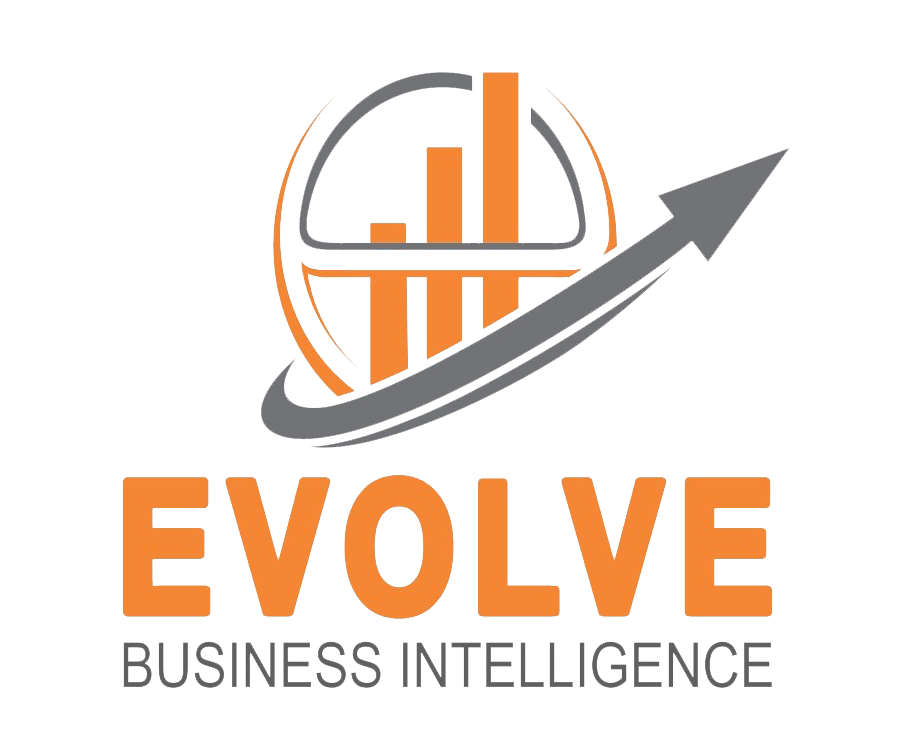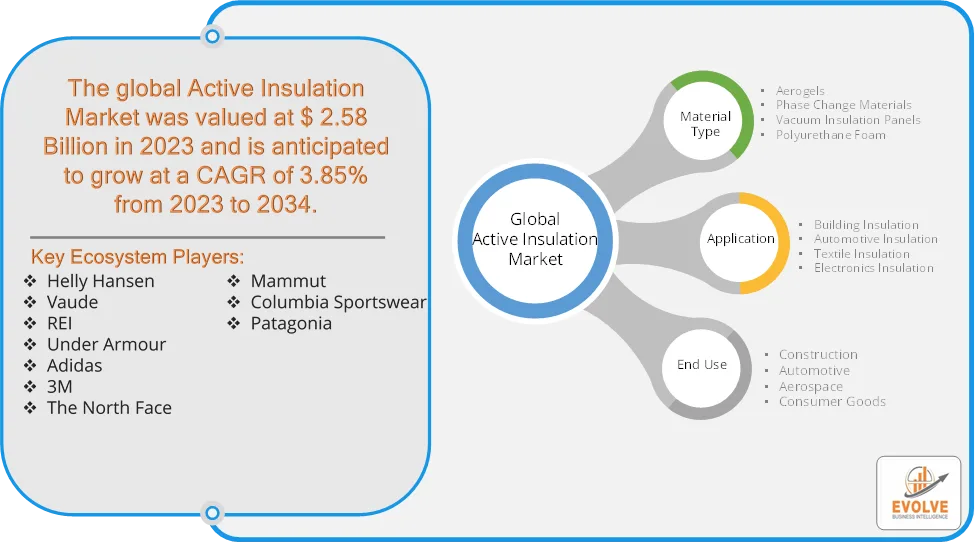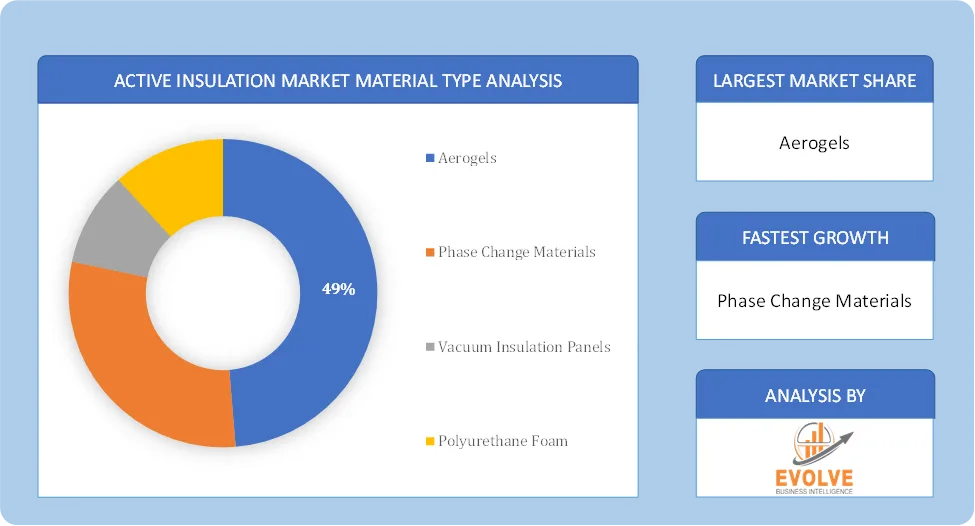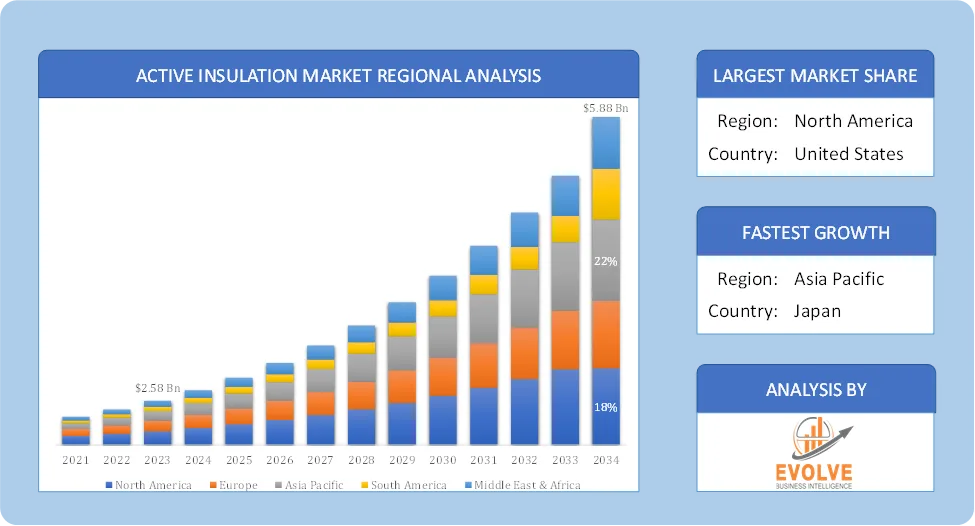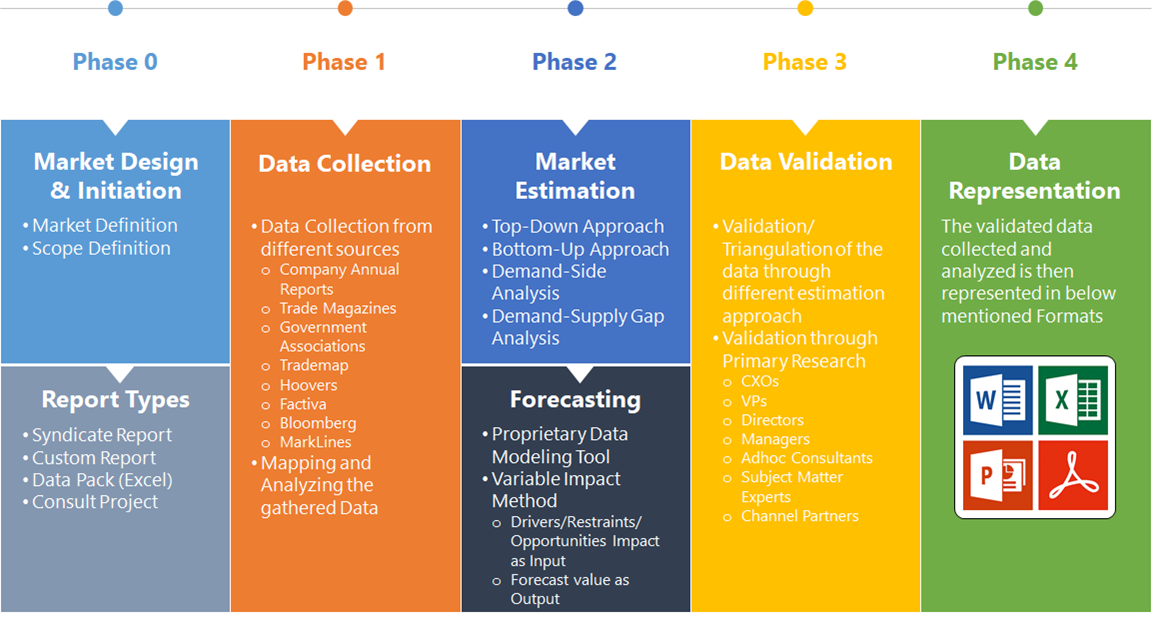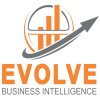Active Insulation Market Overview
The Active Insulation Market size accounted for USD 2.58 Billion in 2023 and is estimated to account for 3.68 Billion in 2024. The Market is expected to reach USD 5.88 Billion by 2034 growing at a compound annual growth rate (CAGR) of 3.85% from 2024 to 2034. The active insulation market is experiencing significant growth and is projected to continue on this trajectory in the coming years. Active insulation refers to materials that can dynamically respond to environmental changes like temperature and moisture, providing effective thermal regulation. These materials are utilized across various sectors, including building and construction, textiles, automotive, and aerospace, to enhance energy efficiency, comfort, and performance.
The active insulation market presents significant growth opportunities driven by the increasing demand for energy efficiency, the rising popularity of outdoor activities, and continuous advancements in material technology.
Global Active Insulation Market Synopsis
 Active Insulation Market Dynamics
Active Insulation Market Dynamics
The major factors that have impacted the growth of Active Insulation Market are as follows:
Drivers:
Ø Technological Advancements in Insulation Materials
Continuous research and development have led to innovative insulation solutions that offer superior thermal and moisture control properties. These advancements include dynamic insulation materials capable of adapting to environmental changes, enhancing their efficiency and appeal across various applications. In the textile industry, there is an increasing consumer demand for multifunctional apparel suitable for diverse activities and climatic conditions. Active insulation materials are integral to producing garments that provide warmth while allowing moisture to escape, catering to the needs of outdoor enthusiasts and athletes.
Restraint:
- High Initial Investment Costs and Technological Limitations
Active insulation materials often come with higher upfront costs due to advanced technologies and specialized manufacturing processes. This price premium can deter builders and homeowners, especially in cost-sensitive regions, from choosing active insulation over traditional options. The increased initial expenditure can be a significant barrier, particularly in residential construction projects where budget constraints are critical. While advancements have been made, certain active insulation materials still face technological challenges that hinder their performance and applicability. Issues such as durability, adaptability to diverse environmental conditions, and integration with existing building systems can limit their effectiveness and appeal.
Opportunity:
⮚ Advancements in Sustainable and High-Performance Materials
Innovations in eco-friendly and high-performance insulation materials are opening new avenues for market expansion. Manufacturers investing in research and development to create advanced insulation materials are well-positioned to capitalize on this trend. Government investments in energy efficiency upgrades, such as insulation, solar panels, and heat pumps, are creating opportunities for active insulation solutions.
Active Insulation Market Segment Overview
Based on Material Type, the market is segmented based on Aerogels, Phase Change Materials, Vacuum Insulation Panels, Polyurethane Foam. The Polyurethane Foam segment dominant the market. Polyurethane foam is a lightweight, flexible, and highly insulative material widely used for both thermal insulation and soundproofing. In active insulation, it stands out due to its thermal responsiveness, moisture resistance, and adaptability.
By Application
Based on Organization Size, the market segment has been divided into Building Insulation, Automotive Insulation, Textile Insulation, Electronics Insulation. The Textile Insulation segment dominant the market. Textile insulation refers to lightweight, breathable, and thermally responsive materials used in clothing and gear to manage body temperature in changing environments. These materials actively respond to body heat and external temperatures to optimize comfort without bulk.
By End Use
Based on Application, the market segment has been divided into Construction, Automotive, Aerospace, Consumer Goods. The Construction segment dominant the market. Active insulation is often embedded in modular panels, making construction faster and more efficient. Active insulation materials, like polyurethane foam and aerogels, are used to minimize heat transfer and helps in maintaining internal temperatures without overloading heating/cooling systems.
Global Active Insulation Market Regional Analysis
Based on region, the global Active Insulation Market has been divided into North America, Europe, Asia-Pacific, the Middle East & Africa, and Latin America. North America is projected to dominate the use of the Active Insulation Market followed by the Asia-Pacific and Europe regions.
 North America Active Insulation Market
North America Active Insulation Market
North America holds a dominant position in the Active Insulation Market. It’s driven by increasing government incentives for energy-efficient building practices and a growing trend towards sustainable construction materials. Governments in the U.S. and Canada are implementing stricter building codes and offering incentives for energy-efficient construction, driving the demand for advanced insulation materials. The push towards net-zero energy buildings is also a significant factor. Strong consumer spending power supports the adoption of premium and energy-efficient building materials and high-performance apparel.
Asia-Pacific Active Insulation Market
The Asia-Pacific region has indeed emerged as the fastest-growing market for the Active Insulation Market industry. Increasing construction activities in residential, commercial, and industrial sectors due to rapid urbanization and industrialization are boosting the demand for insulation materials and expansion in the textile and sportswear industries, particularly in countries like China and India, is driving the demand for active insulation in apparel. Governments across the region are investing heavily in infrastructure development, including energy-efficient buildings.
Competitive Landscape
The global Active Insulation Market is highly competitive, with numerous players offering a wide range of software solutions. The competitive landscape is characterized by the presence of established companies, as well as emerging startups and niche players. To increase their market position and attract a wide consumer base, the businesses are employing various strategies, such as product launches, and strategic alliances.
Prominent Players:
- Helly Hansen
- Vaude
- REI
- Under Armour
- Adidas
- 3M
- The North Face
- Mammut
- Columbia Sportswear
Scope of the Report
Global Active Insulation Market, by Material Type
- Aerogels
- Phase Change Materials
- Vacuum Insulation Panels
- Polyurethane Foam
Global Active Insulation Market, by Application
- Building Insulation
- Automotive Insulation
- Textile Insulation
- Electronics Insulation
Global Active Insulation Market, by End Use
- Construction
- Automotive
- Aerospace
- Consumer Goods
Global Active Insulation Market, by Region
- North America
- US
- Canada
- Mexico
- Europe
- UK
- Germany
- France
- Italy
- Spain
- Benelux
- Nordic
- Rest of Europe
- Asia Pacific
- China
- Japan
- South Korea
- Indonesia
- Austalia
- Malaysia
- India
- Rest of Asia Pacific
- South America
- Brazil
- Argentina
- Rest of South America
- Middle East & Africa
- Saudi Arabia
- UAE
- Egypt
- South Africa
- Rest of Middle East & Africa
| Parameters | Indicators |
|---|---|
| Market Size | 2034: USD 5.88 Billion |
| CAGR (2024-2034) | 3.85% |
| Base year | 2022 |
| Forecast Period | 2024-2034 |
| Historical Data | 2021 (2017 to 2020 On Demand) |
| Report Coverage | Revenue Forecast, Competitive Landscape, Growth Factors, and Trends |
| Key Segmentations | Material Type, Application, End Use |
| Geographies Covered | North America, Europe, Asia-Pacific, South America, Middle East, Africa |
| Key Vendors | Helly Hansen, Vaude, REI, Under Armour, Adidas, 3M, The North Face, Mammut, Columbia Sportswear and Patagonia. |
| Key Market Opportunities | · Advancements in Sustainable and High-Performance Materials |
| Key Market Drivers | · Technological Advancements in Insulation Materials
· Growing Popularity of High-Performance Apparel |
REPORT CONTENT BRIEF:
- High-level analysis of the current and future Active Insulation Market trends and opportunities
- Detailed analysis of current market drivers, restraining factors, and opportunities in the future
- Active Insulation Market historical market size for the year 2021, and forecast from 2023 to 2033
- Active Insulation Market share analysis at each product level
- Competitor analysis with detailed insight into its product segment, Government & Defense strength, and strategies adopted.
- Identifies key strategies adopted including product launches and developments, mergers and acquisitions, joint ventures, collaborations, and partnerships as well as funding taken and investment done, among others.
- To identify and understand the various factors involved in the global Active Insulation Market affected by the pandemic
- To provide a detailed insight into the major companies operating in the market. The profiling will include the Government & Defense health of the company’s past 2-3 years with segmental and regional revenue breakup, product offering, recent developments, SWOT analysis, and key strategies.
